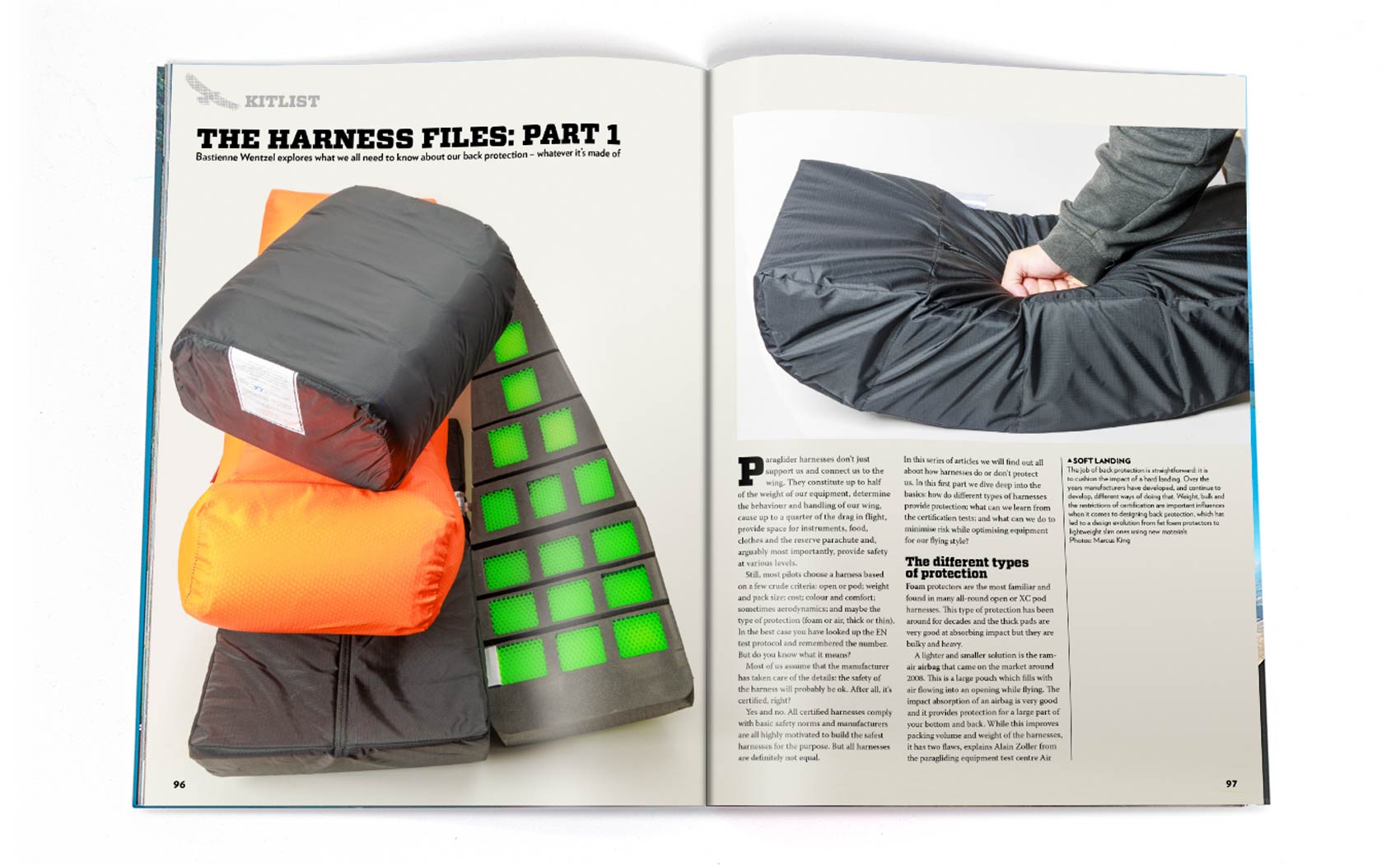In Part 1:
Harnesses don't just support us and connect us to the wing. They constitute up to half of the weight of our equipment, determine the behaviour and handling of our wing, cause up to a quarter of the drag in flight, provide space for instruments, food, clothes and the reserve parachute and, arguably most important, provide safety at various levels.
Still, most pilots choose a harness based on a few crude criteria: open or pod, weight and pack size, cost, colour and comfort, sometimes aerodynamics and maybe the type of protection: foam or air, thick or thin. In the best case you have looked up the EN test protocol and remembered the number. But do you know what it means?
In Part 2:
Honeycomb protectors are fairly new in paragliding harnesses. These absorb energy by deforming, as opposed to displacing air like foam or inflatables. Koroyd, the green material that looks like fused plastic straws, has been around the longest. Recently, two new developments appeared on the market. Alumina from Nova is similar to Koroyd but made from aluminium instead of polymer. Orikami from Niviuk, technically not a honeycomb, looks like a hard plastic version of the Japanese paper art.
All have pros and cons, but being so different from the foam pads and airbags that we are used to, there are a lot of questions around these protectors. Let’s look at the most important issues.
In Part 3:
At the Paragliding World Cup Superfinal in 2021, the Ozone team surprised many by flying with a radically new harness: a fully inflated closed cocoon, dubbed the Submarine. The shape, Ozone claimed, reduced drag by about 7% resulting in a 17cm/s improvement on descent rate at full speed over Ozone’s previous high-end competition harness, the Exoceat.
This performance gain attracted a lot of attention and the harness was quickly adopted by competition pilots everywhere. This year at the recent European championships in Spain more than half of the pilots flew with this harness, or Gin’s submarine-type harness the Genie Race 5 with its similar performance.
Race harnesses, whether submarine or traditional race pod, need to provide stable flight in thermic conditions while flying a competition glider. They must offer high performance, lots of storage space and be comfortable to sit in for many hours. They are all well thought-out harnesses which we’d expect to be safe. However, there is room for improvement, says BHPA executive council member and SRS competition organiser Brett Janaway.
This feature series was published in Cross Country magazine 250, 251 and 252 (2024).
